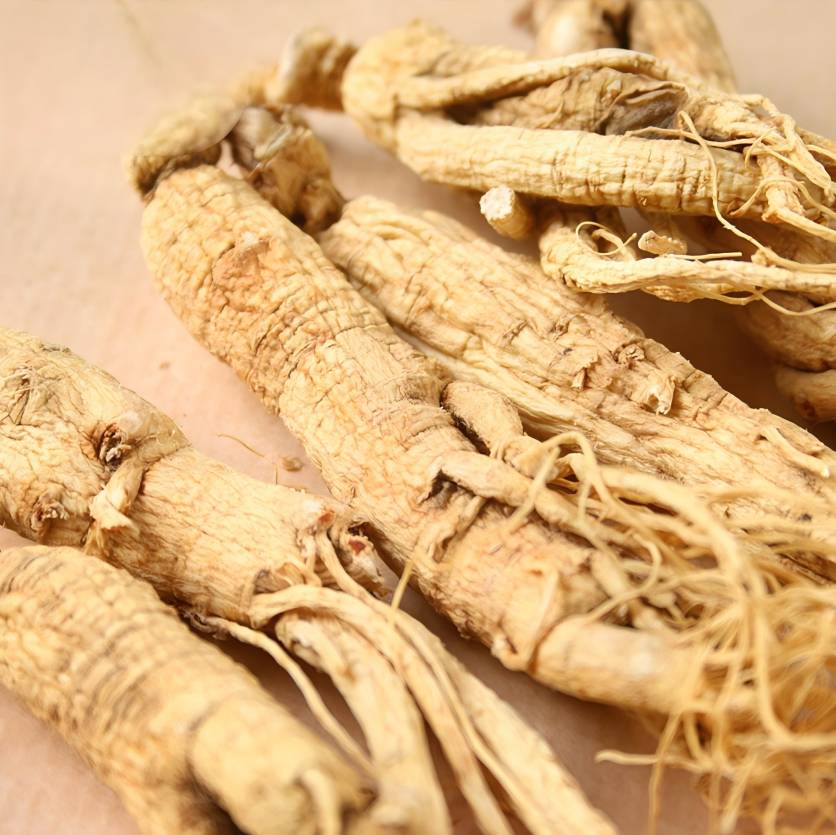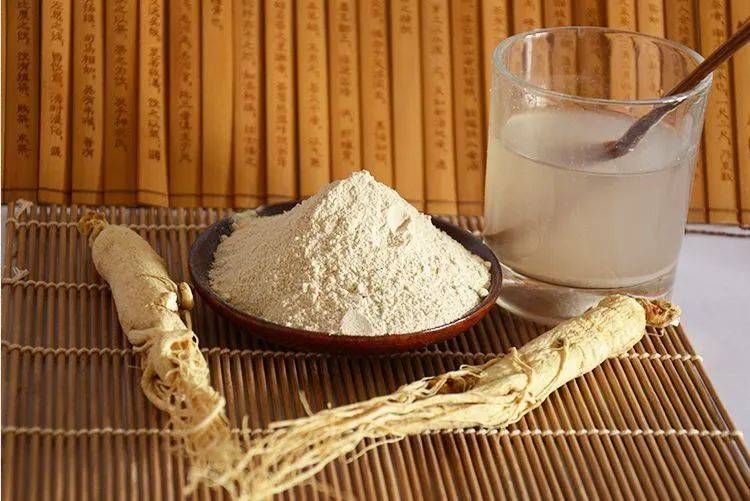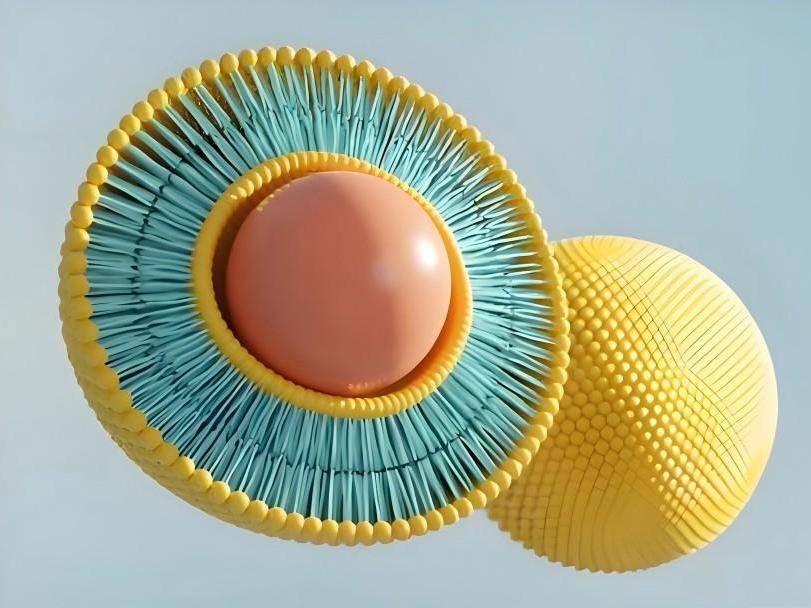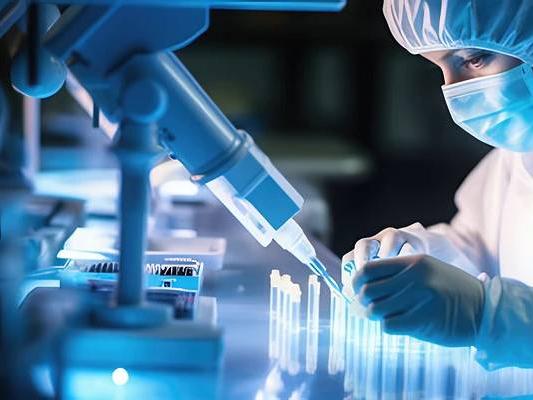高麗人参エキスの研究ギンセノシド抗酸化剤
酸化ストレス状態を指す体内で酸化锖しバランスが乱れたまた酸化での蓄積へ率いフリーラジカル体内で炎症の细胞の浸透、酸化proteasesの過剰分泌がプロデュースしたintermediates、細胞損傷やのアポトーシスを引き起こす。これはかえって体の老化を誘導し、各種の急性・慢性疾患を引き起こす副作用だ。近年、酸化ストレスが腫瘍の発生と発生に関与していることが明らかになっている。細胞にdna変異を誘発し、原がん遺伝子および腫瘍抑制遺伝子の活性化および不活性化を仲介し、異常な細胞増殖を引き起こし、腫瘍の発生につながる[1]。さらに、代謝酵素の誘導、代謝に関連するゲノムの変化、シグナル経路の活性化などにより腫瘍細胞の代謝を誘導し、腫瘍のさらなる発達を促すこともあります[2]。
人参エキスginsenosides高麗人参の主な有効成分の一つです。現在、数十種類のギンセノシドが知られており、そのうちrb1とrg1は抗酸化ストレスにおいて重要な役割を果たし、酸化ストレスを介した疾患の治療に大きな可能性を秘めている。
1ギンセノシドrb1抗酸化ストレス効果
Ginsenoside Rb1is a tetracyclic triterpene saponでwith central nervous sy幹depressant とsedative effects. It is one のthe maでingredients でginseng with antioxidant stress effects. Intermittent high glucose (IHG) increases the activity のxanthine oxidase in cells, which in turn produces a large amount of reactive oxygen species (ROS). Studies have shown that ginsenoside Rb1cのeffectively inhibit the increase in ROS と8-hydroxydeoxyguanosine caused によってIHG, thereby reducing 酸化stress in 細胞とimproving diabetic peripheral neuropathy [3]. 8-Hydroxydeoxyguanosine is a marker of oxidative damage to DNA caused by endogenous and exogenous factors [4]. Under conditions of ischemia and hypoxia in cardiomyocytes, the functiにof the body'sの抗酸化系が減少し、rosを産生する系の活性が増加する(例えば、マロンジアルデヒドの産生量が増加する)。組織への血液と酸素供給が回復されると、酸素フリーラジカルの爆発的な成長があります。
研究によると、ギンセノシドrb1の前処理は、虚血/再灌流(i /r)を受けたh9c2細胞でマロンジアルデヒドの発現を減少させ、sod活性を増加させ、rosレベルを低下させ、カスパーゼ3の発現とアポトーシス細胞の数を減少させる。また、i / rを受けるh9c2心筋細胞の酸化ストレス損傷とアポトーシスを減少させ、h9c2心筋細胞を保護する役割を果たしている[5]。さらに、pi3k / aktは血管新生において重要な役割を果たしている。リン酸化後、一酸化窒素合成酵素(nos)を活性化させてnoを生成させ、血管内皮細胞と心臓の生存を保護する効果がある[6]。
Some studies have suggested that ginsenoside Rb1 may reduce I/R 負傷by activating the PI3K/Akt シグナリング経路[7]. 人参■サポニンRb1activates the Gβ1/PI3K/Akt-Nrf2 シグナリングpathway, which, under the induction of エストロゲンreceptor-dependent heme oxygenase 1 (HO-1), enhances the antioxidant defense capacity of cells, thereby protecting cells from oxidative stress damage [8]. Among these, Nrf2 is a key factor in the cell'の酸化ストレス応答は、抗酸化タンパク質と抗酸化応答要素と相互作用することによって第ii相解毒酵素の発現を調節するkeap1によって調節されている[9]。
骨格筋疲労の重要な原因の一つは、骨格筋におけるrosの過剰産生です。周術期中,麻酔,外科的外傷やその他の要因は、rosの産生を誘導します,これは身体を超えて&#骨格筋疲労につながる、それを削除する39の能力。mao xiangyu[10]らは、ギンセノシドrb1が、nrf2 / are経路を活性化することによって術後疲労症候群の高齢ラットの骨格筋に対する酸化ストレス損傷を緩和し、術後疲労を予防する効果を達成できることを発見した。これは他の研究の結果と一致している[11]。また、大量の酸素フリーラジカル体で生産される製品、ストレス酸化のレベルの細胞が増えるなど、が出细胞膜上にはperoxidizedの透細胞膜が増え、逆に流入の増大一因と細胞外カルシウムイオンを率いてカルシウム细胞は非常に過負荷が现れ、アポトーシスをセルの损伤と[12]。li ying[13]らは、ギンセノシドrb1が酸化ストレス下の網膜神経節細胞(rgc)のca2 +レベルを効果的に低下させ、rgc-5細胞のh2o2によって引き起こされる酸化的損傷に拮抗することを発見した。また、ginsenoside Rb1もから人の噬臍の静脈内皮細胞を守るTNF -α酸化-inducedストレスや炎症性ダメージを抑えることで核要因kappa-B (NF -κB)シグナリングおよびdownregulating表現扇動的な要因とます。[14]タンパク質apoptosis-relatedします。
2 Ginsenoside Rg1'の抗酸化ストレス効果
Ginsenoside Rg1 is a tetracyclic triterpene saponin that has the effects of promoting hippocampal neurogenesis, enhancing learning and memory, anti-aging, anti-fatigue, improving immunity, assisting in anti-tumor, and repairing sexual function. It is one of the main components of ginseng with antioxidant stress effects. Studies have shown that ginsenoside Rg1can protect hippocampal 神経stem cells from damage by indirectly 抑制the P53-P21 signaling pathway, thereby delaying brain aging and improving learning and memory abilities 【15位】. Ginsenoside Rg1 enhances the ability of the enzymatic antioxidant system, reduces the level of oxidative stress, further reduces the activity of the Akt/mTOR signaling pathway in neural stem cells treated with D-galactose, and downregulates the levels of downstream p53, p16, p21, and Rb genes, thereby delaying 認知decline in ネズミand protecting neural stem cells [16].
別の研究では、ginsenoside rg1は、酸化ストレス損傷を減少させ、加齢関連タンパク質の発現を低下させることによって、老化ラットでd-ガラクトース誘発性の脾臓および胸腺損傷に対抗することができることが明らかになった[17]。研究によると、rhoaタンパク質とrhoキナーゼの発現と活性化は、内皮細胞におけるnosの発現を阻害することができる[18]。ギンセノシドrg1はrhoaに結合し、rhoaシグナル伝達経路の活性を低下させ、心臓のatp産生を回復させ、それによってi / r誘発性心筋損傷から保護することができる[19]。
ギンセノシドrg1は、rosの上昇による細胞内カルシウム過負荷を効果的に抑制し、酸化ストレスによる神経細胞のアポトーシスを抑制し、それによって脳虚血損傷を減少させることができる[20]。sirt1は、哺乳類に存在する酵母のクロマチンサイレンシング因子sirt2のホモログであり、最も相同性が高い。酸化ストレスプロセスの制御を含む、体内の多くの生理機能の制御に関与しています。高麗人参サポニンrg1は、sca-1hsc / hpcにおけるsirt1の発現を増強することができる。さらに増えSIRT1下流規制分子NFの表現を阻害するそのκんですそのginsenoside Rg1の老化を防ぐことができるSca-1HSC /互换老化ネズミ誘発型モデルD-galactoseシグナリング経路SIRT1-NF -κB規制され[21]。

さらに、ギンセノシドrg1は、foxo3a関連のシグナル伝達経路を調節することによって、酸化ストレスによる細胞の損傷を抑制することもできる[22]。ギンセノシドrg1はnrf2の核転位を引き起こし、用量依存的に下流のho-1発現を増強する。すなわち、nrf2 / ho-1軸を活性化し、h9c2細胞のjnk経路を阻害して酸化ストレスを防止する[23]。一部の研究結果も有効な学习法Rg1押しのperoxisome proliferators-activated受容体(燃やす働きγ)。胴何よりも被害酸化を和らげる効果がありますupregulating燃やす働き表現やレベルを増やすγSODとGXH-Px身体の「うえのほう[24]大人にある。
In summary, ginsenosides have 抗酸化作用また、抗酸化ストレスに関与するさまざまなタンパク質やシグナル経路に関与しています。ギンセノシドががん細胞の酸化ストレスを抑制することで、がんの発生や発生を抑制できるのか、その作用機序を研究することは、がん治療の新しい考え方を提供します。
参考:
[1] デ・SJUNIOR P LCMARA D D、PORCACCHIA s,et al. cancer heterogeneity and ther- apyにおけるrosの役割[j]。2017年Oxid救急セルLongev、2017年:2467940。
[2] サリヴァン L B、よこして N S。ミトコンドリア 活性酸素とがん[j]。^アポロドーロス、2014年、2:17。
[3] xue b, liang l, zhang y, et al。高麗人参サポニンrb1は断続的に高糖誘導sw480細胞の酸化ストレスを減少させる[j]。中国中医薬研究院紀要,2017,19(2):10-12。
[4] マフフーズm hエマラi aオマールg a2型糖尿病患者における酸化的dna損傷および可溶性fas / fasリガンドのバイオマーカー[j]。american j appl sci,2012,9(4):450-458。
[5]左changpeng, wang fang, zong jing, et al。ギンセノシドrb1のh9c2細胞の低酸素酸素化に対する影響[j]。chinese journal of gerontology, 2017, 37(10): 2341-2344。
【6】曽安元、冷雪、李啓芳。pi3k / akt / enosシグナル伝達経路は、急性心筋虚血を有するラットの心筋細胞に対するギンセノシドrb1の効果を調節する[j]。中国医学情報,2018(2):17-21。
【7】 wu y, xia z y, dou j,et。ginsenosideの保護効果 Rb1 反対 心筋虚血/再灌流損傷 ストレプトゾトシンによって誘発された糖尿病ラット[j]。Mol Biol ^ a b c d e f『官報』第2337号、大正3年(1928年)4月27日。
[8] 黄 Y 鄭P H G。Ginsenoside Rb1 保護 6-hydroxydopamine-inducedに対する oxidative オキシゲナーゼ-1を増加させることによるストレス 表情 を通じて estrogen pi3k / akt / nrf2依存的なヒトの受容体 脳のドパミン作動 細胞か[J]。Toxicol たら 2010年Pharmacol、242(1):18 ~ 28。
[9] 胡L Y、崔 j b, xu x m,et al Nrf2 - Keap1-ARE信号 pathway in トラウマ 肺の負傷 機能か[J]勉強します。2018年Eur牧師さん救急Pharmacol Sci (22 (5): 1402-1408。
[10] mao xiangyu, zhuang chengle, chen weizhe, et al。ginsenoside rb1のnrf2 /の活性化は、術後疲労症候群を有する高齢ラットにおける骨格筋の酸化ストレス損傷に対する経路である[j]。^「journal of medical research, 2014, 43(5): 26-30」。journal of medical research . 2014年3月26日閲覧。
【11】周嘉偉,黄斉。nrf2 / areシグナル経路を介したギンセノシドの抗酸化ストレス効果に関する研究[j]。中国伝統漢方薬学会誌,2016,34(11):2745-2747。
[12] li yinke, shi qiongzhi, chen chen, et al。低酸素および高血糖によるカルシウム過負荷および心筋細胞のアポトーシスに対するリラグルチドの影響[j]。^『官報』第2828号、大正7年(1918年)7月28日。
【13】李英、張秀麗、王卓。ギンセノシドrb1のh2o2損傷rgc-5細胞に対する防御作用と機構[j]。2014年(平成26年)4月5日:ダイヤ改正。
[14] 周 P LU Sの羅應燦(Y) et al.Attenuation TNF - -α- duced内皮細胞炎症に重傷を負いginsen - oside Rb1 を介して inhibiting NF -κB、JNK and p38 signaling 経路か[J]ます^パウサニアス、2017年8月8日、464頁。
[15] xiang yue, chen linbo, yao hui, et al。老化マウスの海馬におけるギンセノシドrg1の防御機構[j]。^ a b c d e f g h『漢文医学』、2017年、48(18):3789-3795。
[16] 陳 L b, yao h, chen x b,et al. ginsenoside rg1は酸化ストレスを減少させ、akt / mtorシグナル伝達を抑制する 減衰させる cognitive 障害 in mice と老いを感じる of neural stem cells d-ガラクトースによって誘導される[j]。神経化学res,2018,43(2):430-440。
〔17〕 sun j z, zhang l h, zhang j,et ginsenosideの Rg1 on splenocytes and thymocytes in an d-ガラクトースによる老化ラットモデル[j]。^『仙台市史』、仙台市、2018年、58 - 94頁。
[18] jin hongguo, zhou min, jin meiyu, et al。血管内皮細胞における低酸素条件下でのrhoa / rhoキナーゼおよびenosの発現に関する研究[j]。日本学術振興会,2016,46(5):321-325。
[19] li l, pan c s, yan l,et al. ginsenoside rg1はラットを改善する 心筋梗塞 ischemia-reperfusion injury by エネルギー代謝経路の調節[j]。前 2018年Physiolさんが、78 9:で亡くなった。
[20] liu xiaodan, cheng shaowu, fan jingying, et al。ギンセノシドrg1のh2o2誘導アポトーシスおよびht22細胞の細胞内ca2 +変化に対する影響[j]。『中国伝統医学研究紀要』湖南大学、2017年、37(3):236-239。
[21] li yuan, zhou yue, wang yaping, et al。ギンセノシドrg1におけるsirt1 / nf-kbシグナル軸が造血幹細胞/前駆細胞の老化を遅らせる役割を示すこと[j]。中国漢方薬、2016年、47(22):4016-4020。
[22] liu y . ginsenoside rg1によるヒト臍帯血由来間葉系幹細胞の酸化ストレス損傷を抑制するfoxo3a関連シグナル経路の制御に関する研究[d]。2017年、重慶医科大学教授。
[23] li q h, xiang y, chen y,et . ginsenoside rg1 pro—低酸素/酸素化損傷に対する心筋細胞の治療 を介して 活性化 of Nrf2 / HO-1 signaling and 抑制 のJNK [J]。cell physiol biochem,2017,44(1): 21-37。
[24] xu meng, ma yanling, zhao qihong, et al。効果を燃やすγ作動薬でストレスに酸化や炎症にネズミをで妊娠糖尿病か[J]。chinese journal of disease control, 2018, 22(2): 195-198。


 英語
英語 フランス
フランス スペイン
スペイン ロシア
ロシア 韓国
韓国 日本
日本








